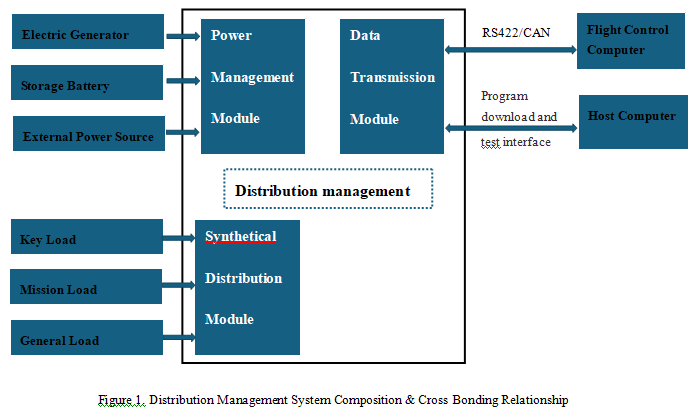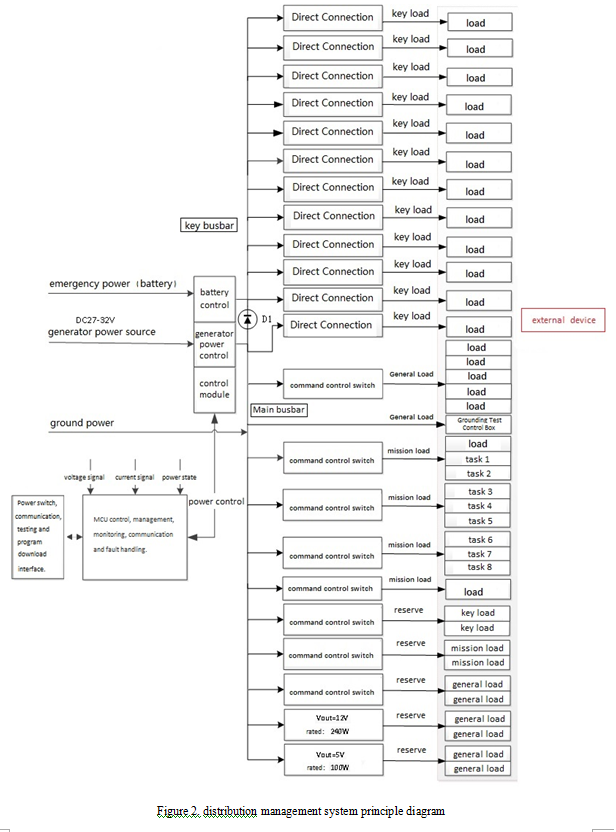
Product introduction


Functions of the Distribution Management System
The power input and characteristics of the power distribution management system shows as Table 1.
Table 1. Power Input
|
No. |
Input Power |
Input Voltage |
Maximum Input Current |
|
1 |
Battery (lithium iron phosphate) |
19-27V |
100A |
|
2 |
External power supply (DC regulated power supply) |
28V |
150A |
|
3 |
Generator (DC excitation) |
27-32V |
150A |
1)The battery can be manually controlled to connect to the power grid and charged through other power sources in the grid (external power source/generator). There is a charging current limit during the charging process.
2)The generator can be commanded to be connected to the power grid. As the main power source, the generator should be capable of powering all equipment.
3)It can be automatically connected to or disconnected from the power grid after being connected to or disconnected from the external power supply. The external power supply should be capable of powering all equipment.
1. To meet the functional requirements of different airborne equipment,the power distribution management system needs to be designed based on the importance level, power consumption, power distribution characteristics, and functional realization methods of each airborne equipment.
2. Airborne equipment is classified into three types based on their importance levels: key loads, mission loads, and general loads.
3. When electrical faults occur in task loads and general loads, the power distribution of key loads should not be affected.
4. According to the power distribution control mode, it is divided into three types: direct connection, manual control and command control.
a) Direct connection: The power supply interface of the airborne equipment and the electrical busbar are directly connected by wires, without any control switch devices.
b)Manual control: The power-on control devices for the airborne equipment need to be manually controlled by ground staff.
c)Command control:The power-on control devices for the airborne equipment need to respond to the aircraft commands to complete the power on and off.
Online booking